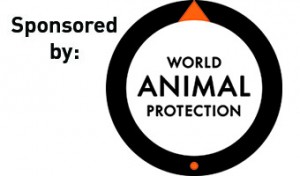Informed shoppers put the spotlight on animal welfare
Food companies operate in a complex and uncertain environment. Supply chains are increasingly global, longer and more complex and information flow between the links can be difficult and incomplete. At the same time, consumers are more interested in the food they eat, where it comes from and how it is made. They have access to more information than ever before and are increasingly sharing with their friends, families and through social media.

While consumers may not fully understand supply chains, social media has certainly changed the way that people think about the relationship between global and local events and the way they shop. Now when consumers learn about a fire in a factory in Bangladesh or the intensive confinement of sows in Manitoba, they look to Canadian brands and retailers for action.
Canadian consumers care about the welfare of farm animals and expect food companies to ensure the welfare of animals in their supply chain. In a 2012 survey of 2,100 Canadian consumers conducted by NPD Group Inc. for World Animal Protection, 62% of the respondents ranked the trustworthiness of their store as the most important factor in where they chose to purchase eggs.<1> If those consumers were to learn that grocer was selling eggs from hens that had suffered unnecessarily, more than one third would shop somewhere else. When asked the same question about their favourite brand, more than half said that they would switch brands or products. In either case, they will tell their friends and everyone on social media, but rarely will they tell the store.
In the same study, when asked what they perceived to be indicators of humane treatment, 80% said that hens need to be healthy and free from injury, 70% said they should be able to move around and stretch their wings and 60% said they should have access to the outdoors and be able to perform natural behaviours. Consumers clearly have expectations that are not consistent with on-farm practices in Canada and it is this gap, between consumer expectations and the realities of farming, that represents a real risk for grocers.
While farm animal welfare represents a risk for retailers, it can also represent an opportunity. There are some consumers that will not pay more for higher welfare meat, dairy and eggs and others that already are making more humane choices. But the majority of all shoppers are somewhere in the middle. As those consumers learn about the lives of farm animals they are increasingly choosing to buy higher welfare meat, dairy and eggs. Farm animal welfare is a relatively new issue for grocers and there are still opportunities for leading retailers to make welfare an integral part of their brand.
While recent updates to the Codes of Practice for cows and pigs will improve the lives of farm animals, some industry practices are not acceptable to consumers. Reactions to undercover videos of sow stalls and veal crates show that consumers and producers often differ in their views on some common industry practices. As the public-facing part of the supply chain, grocers need to be responsive to consumers.
<1> NPD Group Inc. (2012). Consumer Attitudes and Demand for Cage-Free Eggs.
